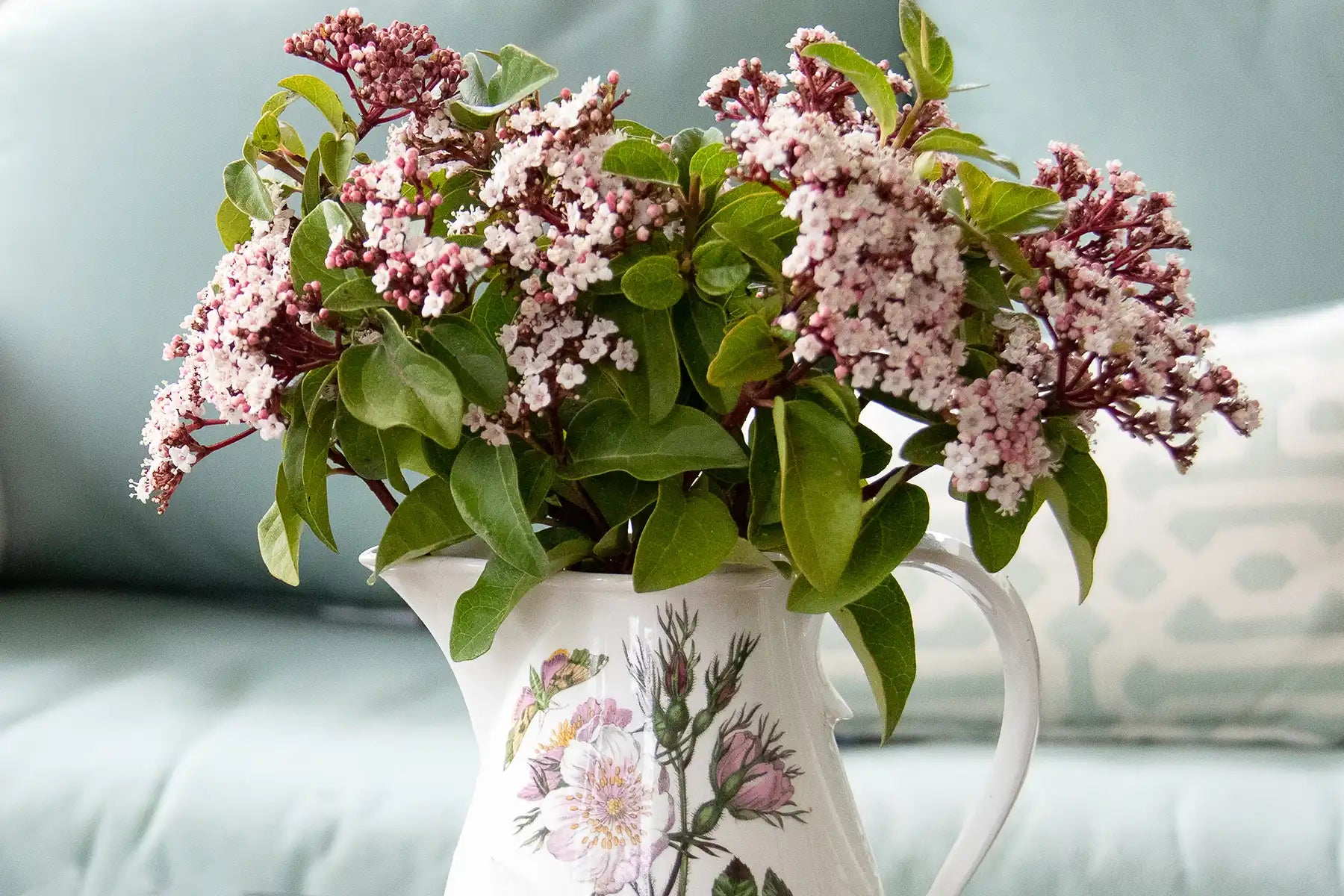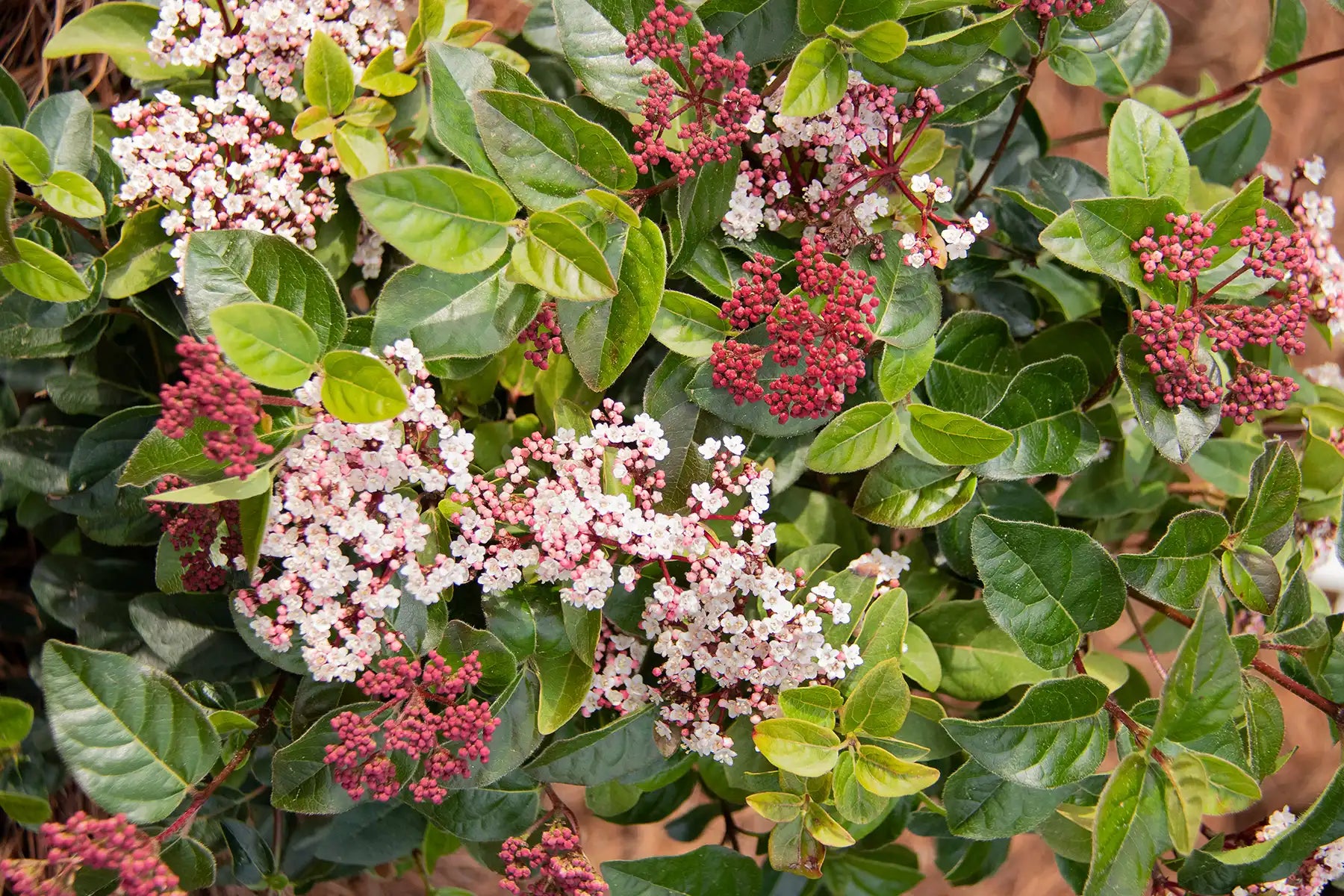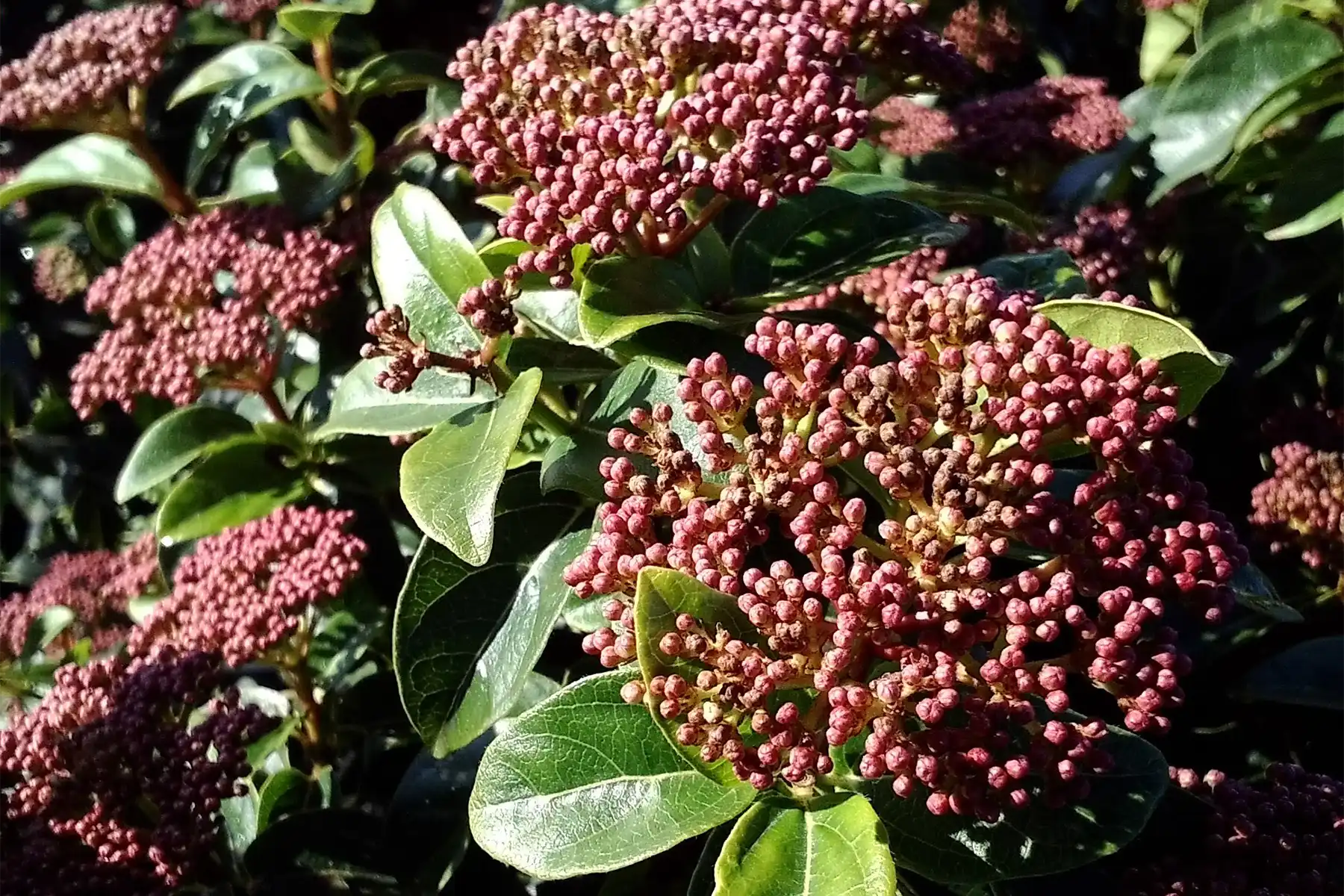


Let’s Grow
About Shades of Pink® Viburnum
There are just so many reasons to fall in love with Shades of Pink. The perfect plant to grow in hedgerows or as a backdrop plant in mixed ornamental beds, Shades of Pink will delight you with its glossy, broad and evergreen leaves that offer four seasons of garden color and privacy. In winter, these shrubs provide valuable shelter to songbirds and will protect your garden from harsh winter winds. But as attractive as these plants are in winter, they’re even more stunning when they bloom in spring!
|
Shades of Pink® Viburnum |
|
|
Botanical Name |
Viburnum Tinus 'Lisarose' |
|
Plant Hardiness |
Zone 7-11 |
|
Mature Height |
4 to 6' |
|
Mature Width |
3 to 4' |
|
Sun Needs |
Full Sun, Partial Shade |
|
Does Not Ship To |
AK, AZ CA, HI, PR |
|
|
|
Shades of Pink® produces a wealth of small and clustered flowers that blush pale pink and contrast beautifully against the plant’s dark green leaves. Pollinators will flock to your garden in droves to feast about the abundant nectar in the mildly scented flowers and you’ll appreciate the extra garden color too!
Hardy and adaptable, Shades of Pink® is a no nonsense type plant that can grow happily in many different soil types just as long as they are well draining. This plant also has excellent heat tolerance and it’s drought resistant too, making it a top choice to grow in steamy, southern gardens.
Special features:
- Magnet for bees, butterflies and other pollinators
- Evergreen leaves for year round privacy
- Heat and drought tolerant
- Mildly fragrant flowers
- Low maintenance
How to care for viburnum
Shades of Pink® viburnum are very versatile plants that make sense in any garden style. From formal gardens to wild and rustic planting arrangements, these bushes can be used as backdrop plants to accentuate smaller perennials or annuals and they won’t overwhelm mixed beds. However, viburnums are also lovely on their own and they make a big impact when planted in a group. Growing several viburnums together will give you a more colorful array of spring flowers and the foliage will provide an ideal habitat for birds to nest in and raise their young. After flowers fade, viburnums produce berries that birds love to munch on too!
To enjoy your viburnum bush to its fullest, try planting it near a back patio or open window or any outdoor seating area. This will give you easy access to the plant’s fragrant blooms and you can watch all the hummingbirds and butterflies that come to visit the flowers too!
When to plant viburnum
The best time to plant viburnum bushes is in spring or autumn when the temperatures are cool. Planting at this time of the year will avoid heat stress and give your new Shades of Pink shrub more time to adjust to your garden.
Where to plant viburnum
Shades of Pink® viburnum aren’t picky and they grow in most well-draining soil types, although they prefer a bit of extra soil nutrients. If you have very poor soil, consider amending your bed with a bit of compost or other organic matter before planting your Shades of Pink viburnum.
Shades of Pink® viburnum can grow in containers or in in-ground beds and they can adapt to both full sun and part shade. That said, you’ll get more flowers and berries if you provide your plant with at least 6 hours of bright light daily.
How to plant viburnum
When you’re ready to plant your Shades of Pink® viburnum, dig a hole that is as deep as your plant’s root ball and 2 to 3 times as wide. Place your plant and then backfill the hole and keep your new viburnum bush well-watered while it adapts to your garden.
After planting, viburnum bushes are quite low maintenance, but they benefit from an annual application of a slow release, balanced fertilizer in spring. New plants should be watered often and deeply, but they don’t grow well in overly saturated soil, so don’t over do it! Once plants are established, they rarely need extra care and can do well with about 1” of water per week.
While it isn’t strictly needed, if you want to prune your Shades of Pink viburnum, wait until after the plant flowers to avoid accidentally damaging next season’s buds.
Growing viburnum in pots
You may not think to grow viburnum bushes in containers, but they can adapt to pots too. Growing Shades of Pink® viburnum in containers will give you more choices for where you can locate your plant and they can even be kept in small patios or other limited space gardens!
Well-draining pots are a definite must have if you want to keep any plant, including viburnum, in container gardens. Pots should also be at least 8” wider than your plant’s root ball to give your bush room to grow.
How tall does viburnum grow?
Full grown Shades of Pink viburnum grow 4 to 6’ tall and 3 to 4’ wide, but plants will stay a bit smaller when grown in pots.
History of Shades of Pink Viburnum
There are between 150 and 175 different types of viburnum, including some deciduous and some evergreen species. Most viburnums are native to the northern hemisphere, where they are often found in temperate climates and shady locations. However, there are some heat loving species that thrive in South America and Africa.
Gardeners have fallen in love with viburnums the world over and these plants have been cultivated for generations. Through careful breeding practices, many different cultivars of viburnums have been developed over the years with unique characteristics, various flower colors and bloom times and other special features. Shades of Pink viburnum is a relatively new selection that was first patented in 2012 and is renowned for its heat tolerance and colorful flowers.
Buying Shades of Pink Viburnum at Cold Creek Nurseries
All of our plants come directly from the original breeders and they are grown from stem cuttings, rather than seed, to preserve the unique look and feel of the plant. Once you add Shades of Pink viburnum to your garden, you’ll be amazed by the amount of wildlife you’ll attract. But just be warned -- once you plant Shades of Pink in your garden, you’ll probably want to grow a few more because this plant is just so charming!
Choose options




